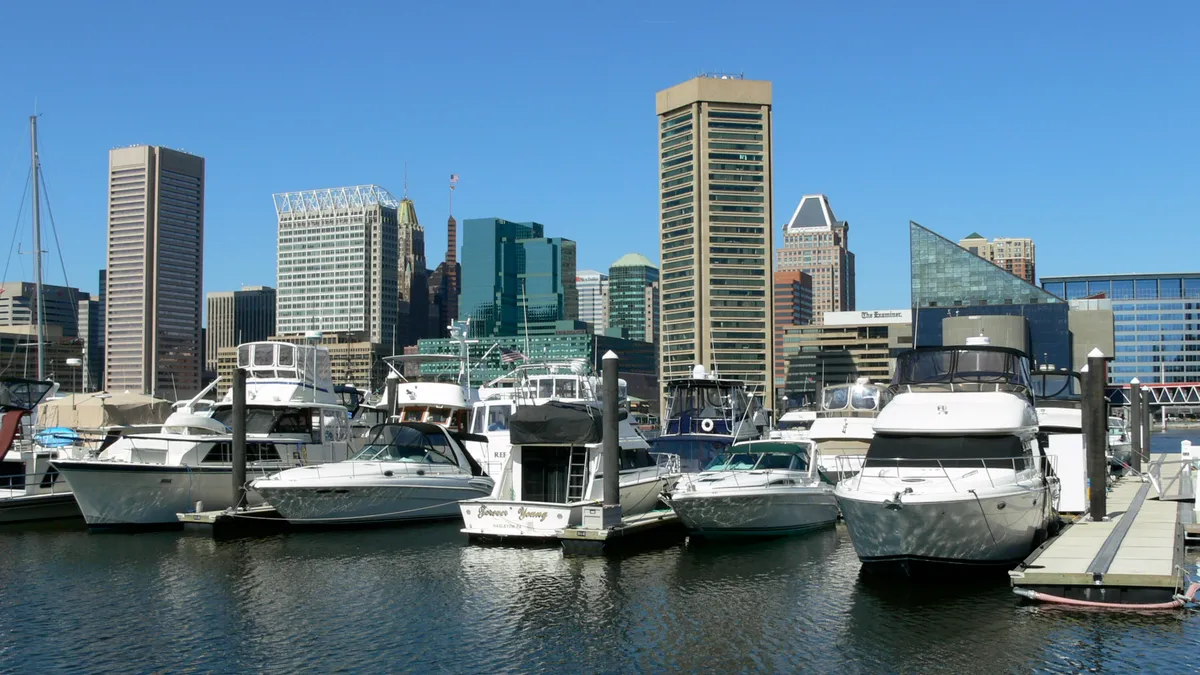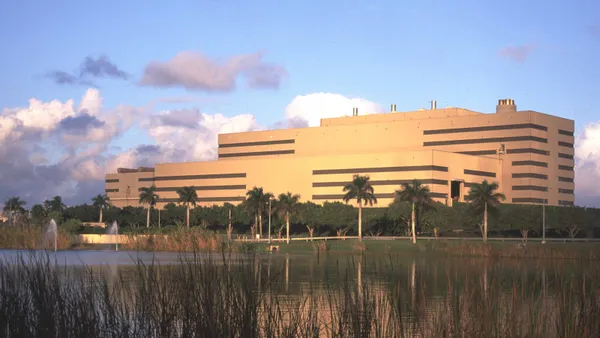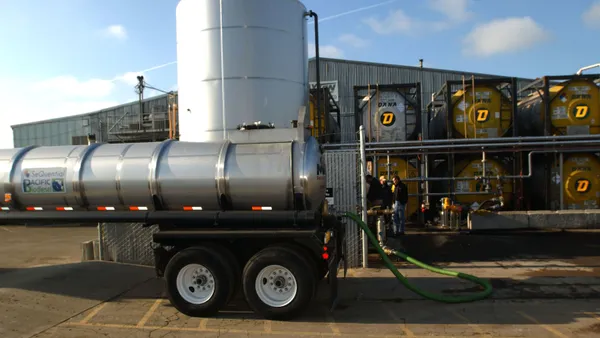Dive Brief:
- Discussion continues around managing nitrogen oxide (NOx) emissions from a Baltimore waste-to-energy facility operated by Wheelabarator Technologies, as reported by Baltimore Brew. This has been prompted in part by the Maryland Department of the Environment's (MDE) plans to update its Reasonably Available Control Technology (RACT) requirements for large municipal waste-to-energy facilities in 2018.
- Only two facilities in the state would be affected by these changes: Wheelabrator Baltimore and the Montgomery County Resource Recovery Facility operated by Covanta. According to MDE, Wheelabrator Baltimore generated 1,123 tons of NOx emissions in 2015 and Montgomery generated 441 tons.
- Wheelabrator Baltimore processed about 22% more waste than Montgomery during that year but had notably higher NOx emissions. The measurement in question is parts per million (ppm) and a Jan. 17 meeting focused on whether Wheelabrator could make the changes necessary to see a significant reduction in its emissions. The company has said it could upgrade equipment to stay below a 170 ppm NOx limit, though advocates say that's not enough.
Dive Insight:
While these two WTE facilities may be in their own regulatory category within Maryland, they share few similarities. Wheelabrator Baltimore opened in 1985 and has more capacity (2,250 tons per day) with less space to make major facility upgrades. Montgomery opened in 1995, processes less waste (1,800 tons per day) and has since installed NOx reduction technology. At the meeting, Wheelabrator’s director of air quality programs said Wheelabrator Baltimore couldn't reach similar levels unless they were to "rebuild the boiler from the bottom up."
Environmental advocates were unsatisfied with this answer, citing lower NOx ppm limits in other states and the fact that previous research has shown Baltimore to have one of the highest emissions-related mortality rates in the country despite a trend of emissions reduction. Some of the same activists that took credit for stopping another WTE facility in Baltimore last year were also present and have expressed an interest in making sure that Wheelabrator's contract isn't renewed.
This type of anti-WTE sentiment has been seen around other facilities before and it seems to be informing the ways in which many cities are approaching "zero waste" or high diversion goals. Aside from New York, multiple major cities with such goals told Waste Dive last fall that they don't see a role for this technology in future years. Though according to the Environmental Protection Agency, energy recovery still ranks above landfills on the waste hierarchy and many in the industry believe that even if these cities can reach their diversion targets they will still need to send the remaining refuse somewhere.















